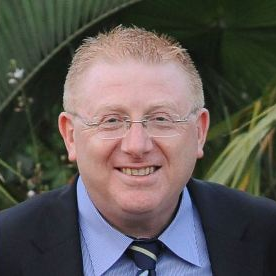Oral Surgery–Minimizing Postoperative Morbidity
A special issue of Medicina (ISSN 1648-9144). This special issue belongs to the section "Dentistry and Oral Health".
Deadline for manuscript submissions: closed (30 September 2020) | Viewed by 103825
Special Issue Editor
Interests: oral surgery; minimally invasive surgery; postoperative morbidity; dental implants; bone substitutes; block graft; bone graft
Special Issues, Collections and Topics in MDPI journals
Special Issue Information
Dear Colleagues,
Performing surgery without postoperative morbidity is an ideal we all strive to achieve. The present Special Issue intends to introduce new manuscripts focused on cutting-edge and rapidly developing treatment modalities and their applications to oral surgery, focusing on minimum postoperative morbidity. Many presume that minimally invasive surgery equals minimum postoperative morbidity and vice versa. This is not always the reality. Advances in imaging, instrumentation, biomaterials, and techniques bring us closer to surgery with minimum postoperative morbidity. The manuscripts should discuss both the “how to” as well as the “why” behind the concept of oral surgery with minimum postoperative morbidity, as the aim of the Special Issue is to provide readers with guidance for a broad spectrum of procedures and coalesce information on the available technologies into one useful resource. “Oral Surgery—Minimizing Postoperative Morbidity” will be a useful new guide to a large variety of specialists seeking to refine their clinical expertise and minimize morbidity for their patients.
Prof. Gavriel Chaushu
Guest Editor
Manuscript Submission Information
Manuscripts should be submitted online at www.mdpi.com by registering and logging in to this website. Once you are registered, click here to go to the submission form. Manuscripts can be submitted until the deadline. All submissions that pass pre-check are peer-reviewed. Accepted papers will be published continuously in the journal (as soon as accepted) and will be listed together on the special issue website. Research articles, review articles as well as short communications are invited. For planned papers, a title and short abstract (about 250 words) can be sent to the Editorial Office for assessment.
Submitted manuscripts should not have been published previously, nor be under consideration for publication elsewhere (except conference proceedings papers). All manuscripts are thoroughly refereed through a single-blind peer-review process. A guide for authors and other relevant information for submission of manuscripts is available on the Instructions for Authors page. Medicina is an international peer-reviewed open access monthly journal published by MDPI.
Please visit the Instructions for Authors page before submitting a manuscript. The Article Processing Charge (APC) for publication in this open access journal is 2200 CHF (Swiss Francs). Submitted papers should be well formatted and use good English. Authors may use MDPI's English editing service prior to publication or during author revisions.
Keywords
- Oral surgery
- Navigation
- Minimally invasive surgery
- Flapless surgery
- Postoperative morbidity
- Dental implants
- Immediate implant placement
- One stage surgery
- Immediate loading
- Bone substitutes
- Bone graft
- Block graft
- Sinus augmentation
- Socket preservation
Benefits of Publishing in a Special Issue
- Ease of navigation: Grouping papers by topic helps scholars navigate broad scope journals more efficiently.
- Greater discoverability: Special Issues support the reach and impact of scientific research. Articles in Special Issues are more discoverable and cited more frequently.
- Expansion of research network: Special Issues facilitate connections among authors, fostering scientific collaborations.
- External promotion: Articles in Special Issues are often promoted through the journal's social media, increasing their visibility.
- Reprint: MDPI Books provides the opportunity to republish successful Special Issues in book format, both online and in print.
Further information on MDPI's Special Issue policies can be found here.






